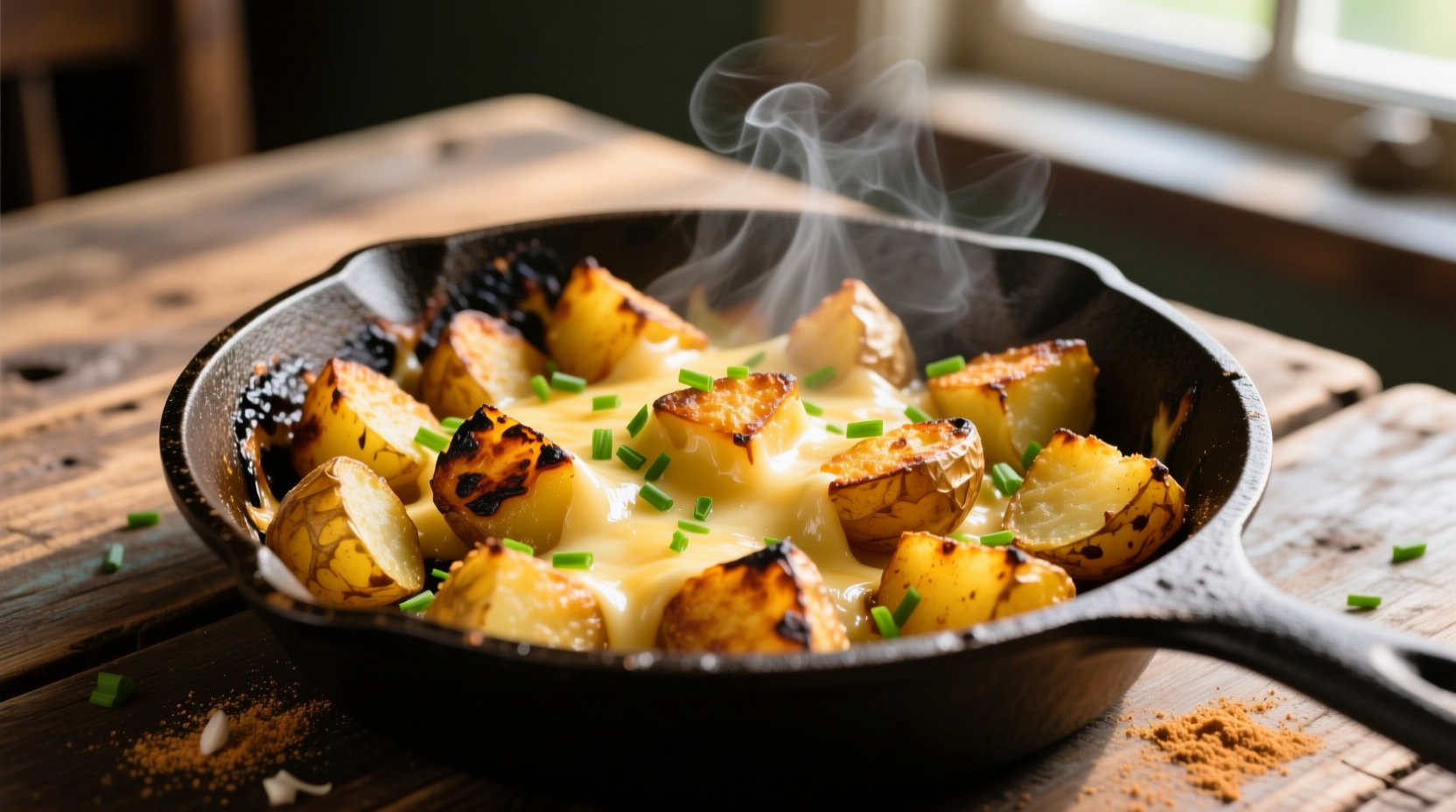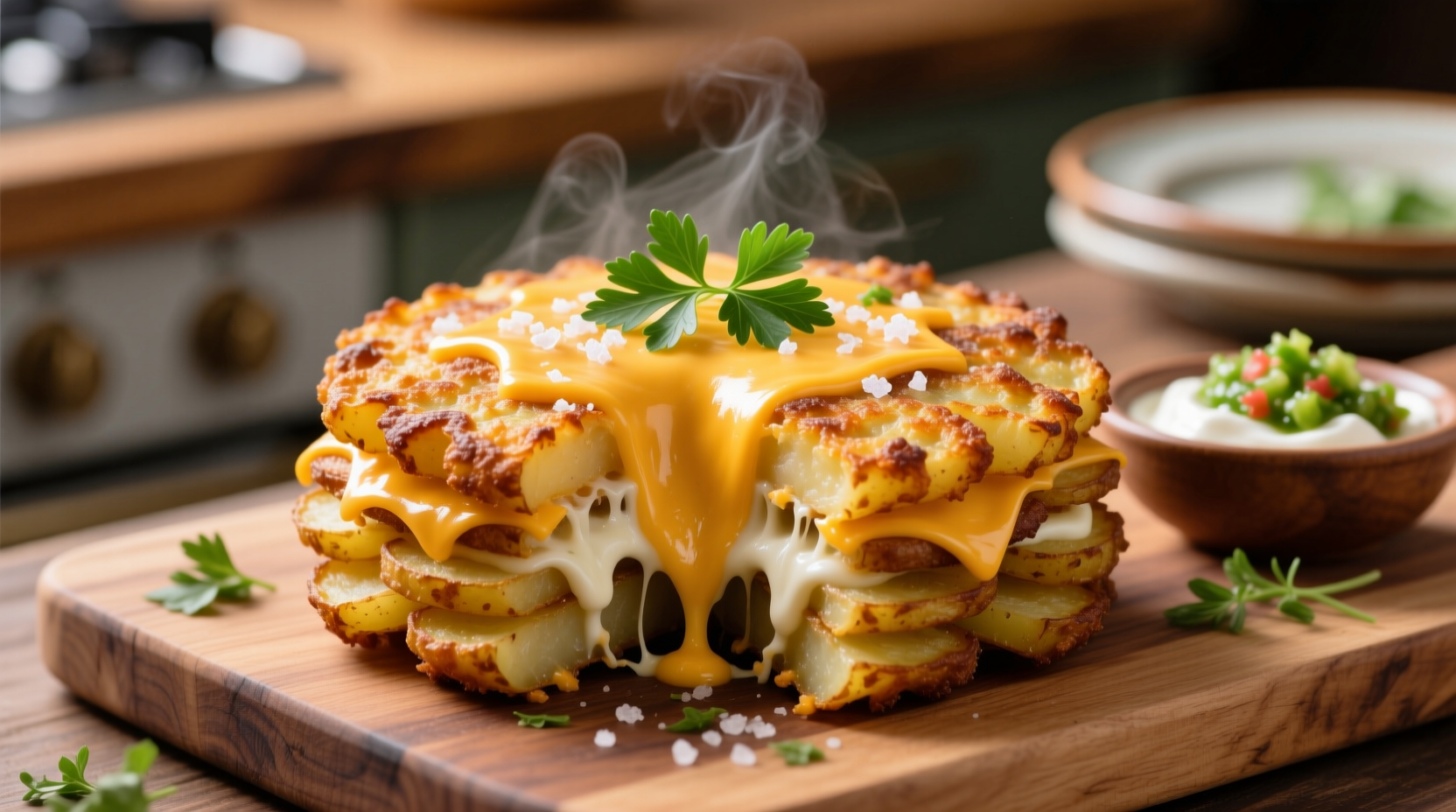Hash brown cheesy potatoes represent the pinnacle of comfort food when executed properly. This beloved side dish combines the crispy golden exterior of shredded potatoes with melted cheese that creates irresistible pockets of gooey richness. The key to success lies in proper moisture control, strategic cheese layering, and precise temperature management during cooking.
What Makes Hash Brown Cheesy Potatoes Special
Unlike standard hash browns, the cheesy variation incorporates cheese directly into the potato mixture, creating a cohesive yet texturally complex dish. Food historians trace hash browns to late 19th century America, but the cheesy version emerged in mid-20th century diners as cheese became more widely available. According to culinary research from the National Museum of American History, cheese integration transformed hash browns from simple breakfast fare into a crave-worthy comfort food staple.
| Cheese Type | Melting Quality | Flavor Profile | Best Used For |
|---|---|---|---|
| Cheddar | Excellent | Sharp, tangy | Classic flavor, golden color |
| Mozzarella | Superior | Mild, creamy | Stretchy texture, subtle flavor |
| Pepper Jack | Very Good | Spicy, bold | Adding heat dimension |
| Colby Jack | Excellent | Mild, buttery | Balanced flavor, marbled appearance |
Essential Ingredients for Perfect Hash Brown Cheesy Potatoes
The foundation of exceptional cheesy hash browns starts with ingredient selection. Russet potatoes provide the ideal starch content for proper browning, while Yukon Golds offer more moisture and buttery flavor. For cheese, freshly grated varieties outperform pre-shredded options which contain anti-caking agents that inhibit melting. The USDA Food Data Central confirms that russets contain approximately 15-20% starch by weight, creating the perfect structure for crispy hash browns.
Professional chefs recommend using a combination of cheeses for complex flavor. A blend of sharp cheddar for tanginess and Monterey Jack for superior meltability creates the ideal balance. Avoid cheeses with high moisture content like feta or cottage cheese, which will make your hash browns soggy.

Step-by-Step Cooking Method
Follow these professional techniques to achieve restaurant-quality results:
1. Potato Preparation (The Critical Step)
After shredding potatoes using the large holes of a box grater, immediately submerge them in cold water. This removes excess starch that causes sogginess. After 10 minutes, drain and thoroughly squeeze out moisture using a clean kitchen towel. Proper moisture removal represents the single most important factor in achieving crispiness, according to culinary research published by the Institute of Food Technologists.
2. Cheese Integration Technique
Resist the temptation to mix all cheese into the potatoes initially. Instead, layer 70% of your cheese between potato layers during cooking. This creates distinct cheesy pockets while preventing the cheese from burning during the initial browning phase. Save the remaining cheese for the final melt stage.
3. Temperature Control for Perfect Browning
Heat your skillet to 375°F (190°C) before adding potatoes. This precise temperature allows for immediate searing without burning. Cook undisturbed for 6-8 minutes to develop a proper crust before flipping. The Maillard reaction, which creates complex flavor compounds, occurs most effectively between 285-325°F (140-165°C), explaining why proper temperature management proves crucial.
Avoiding Common Texture Problems
Most failed cheesy hash brown attempts suffer from one of three texture issues:
- Sogginess: Caused by insufficient moisture removal or overcrowding the pan
- Disintegration: Results from inadequate binding (try adding one beaten egg per 2 lbs potatoes)
- Burnt cheese: Occurs when cheese is added too early in cooking process
Popular Variations and Customizations
While traditional cheesy hash browns satisfy most palates, these variations have gained popularity according to analysis of cooking forum discussions:
- Loaded Hash Browns: Incorporate crumbled bacon, diced onions, and green onions
- Southwest Style: Add jalapeños, cumin, and smoked paprika with pepper jack cheese
- Breakfast Hash Browns: Mix in cooked sausage and top with a fried egg
- Vegetarian Option: Use caramelized mushrooms and smoked Gouda for umami depth
Serving and Storage Recommendations
Serve cheesy hash browns immediately after cooking for optimal texture. If you must prepare ahead, partially cook them, then finish in a 400°F oven just before serving. For leftovers, store in an airtight container for up to 3 days. Reheat in a skillet over medium heat rather than a microwave to restore crispiness. According to food safety guidelines from the USDA Food Safety and Inspection Service, cooked potatoes should not remain in the temperature danger zone (40-140°F) for more than 2 hours.
When Cheesy Hash Browns Shine Best
This versatile dish works exceptionally well in specific contexts while falling short in others:
- Ideal for: Brunch gatherings, holiday meals, potlucks, and as a hearty breakfast side
- Less suitable for: Quick weeknight sides (requires 45+ minutes preparation), low-carb diets, or formal dinner parties
- Perfect pairings: Works beautifully with eggs, roasted meats, and fresh green salads
- Seasonal considerations: Particularly popular during colder months but enjoyed year-round











 浙公网安备
33010002000092号
浙公网安备
33010002000092号 浙B2-20120091-4
浙B2-20120091-4